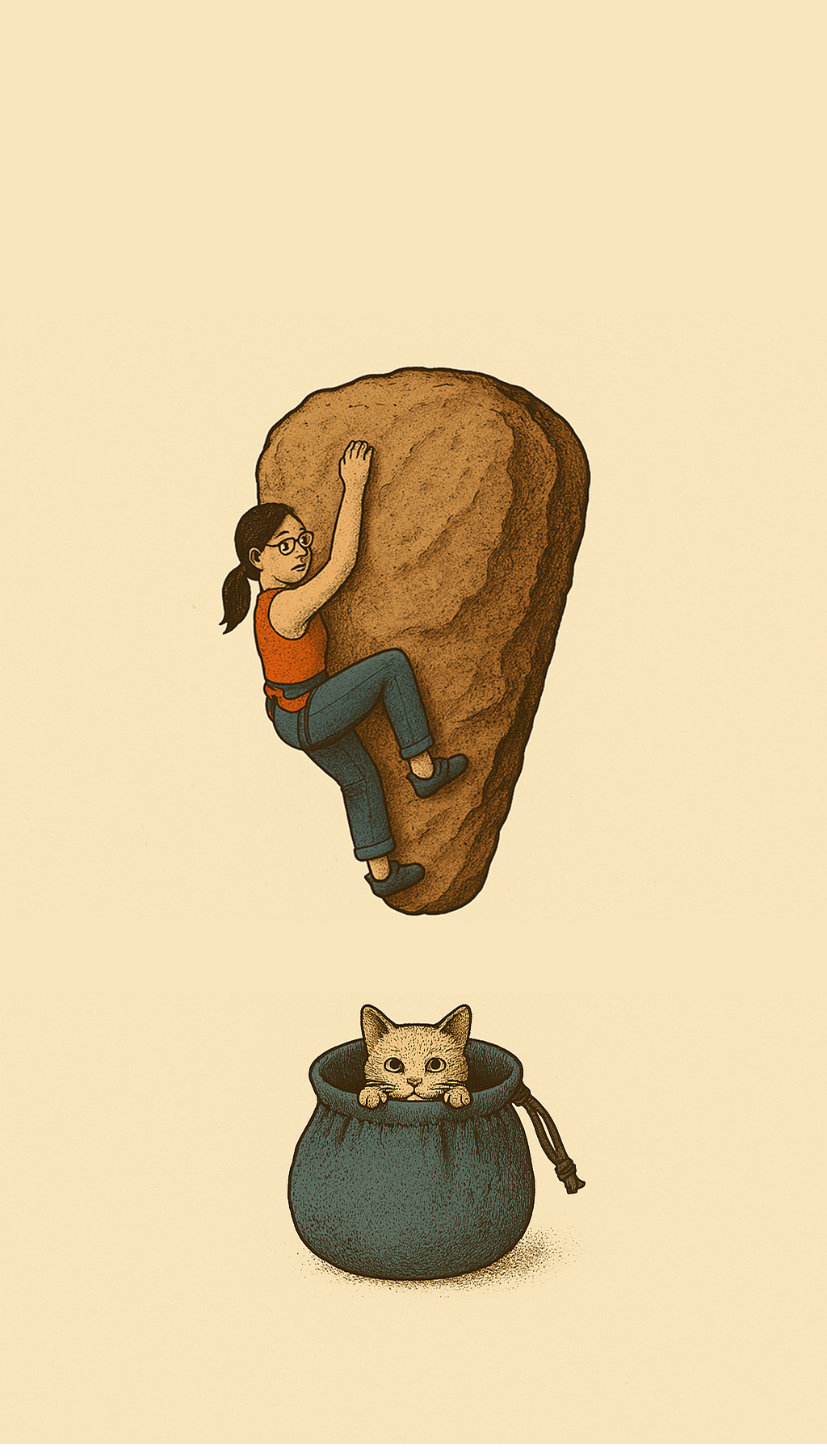Stop Span-icking: Finding Feet while Bridging at Full Breadth
Span-Walking: Train Balance Under Load in Everyday Spaces
A 1–5 minute practice for climbers who want smoother footwork under stretched-out stress.
What This Trains
Focused, balanced footwork while your upper body is working hard
Nervous system familiarity with spanning effort + smooth lower-body movement
Real-world transfer from urban environments to crux climbing movement
Why This Matters
How many times a day do you walk between two railings—on stairs, footbridges, or narrow corridors?
Now: how many times on the wall have you lost your footing, or feared it, while spanning between two demanding handholds—like distant slopers or delicate crimps?
This micro-practice literally bridges those two situations. It helps you train the ability to stay connected to your footwork, even when your brain is overloaded by the effort it takes to span, stabilize, and not let go with your hands.
🚶♂️🖐 The Span-Walking Drill
Where to Practice
Look for:
A pedestrian walkway, stairwell, hallway, or bridge
Railings or smooth contact points on both sides, wide enough that your elbows are at ~90° or more when your arms are outstretched
You don’t need to be at max span—but your arms should be engaged with some degree of outward pressure.
Step-by-Step
Find Your Setup
Stand between the railings or contact points. Lightly press your hands outward into both sides. You should feel a stretch through the chest and arms, but still have easy access to foot movement.Start Walking Slowly
Begin taking smooth, deliberate steps forward. Pause briefly at each step to feel your center of mass shift and stabilize over your feet.Divide Your Attention: 80/20 Rule
80% of your focus: On your feet—how they make contact, how your weight moves, how balanced you feel
20% of your focus: On keeping the same consistent contact and light pressure between your hands and the railings. Let them slide, not stick.
Observe the Relationship
Notice:What happens to your footwork when the effort in your arms increases?
Does your gait change when you lose tension through your fingers?
Do you rush, freeze, or stumble when your span approaches your limit?
Why It Works
This simple drill trains you to anchor awareness in your footwork, even when your upper body is in a complex or maxed-out position.
Just like a crux move on the wall—where your brain is screaming about your fingers—but your feet decide your fate.
With repetition, this practice builds:
Balance under stress
Span tolerance
Whole-body awareness while climbing
Somatic trust in your lower body, even under upper-body load
